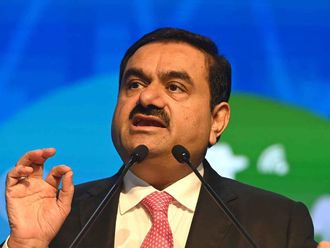Paris: Neverfull — the name of Louis Vuitton’s best-selling handbag — sums up well its parent LVMH: even if it snapped up all of the world’s last remaining independent luxury brands, it would still have room for more.
The French group’s insatiable appetite for acquisitions has been tolerated by investors while its cash cow Louis Vuitton, which contributes half of group profit, grew revenues at a rate of more than 10 per cent in the past two decades.
But this year Vuitton’s sales growth halved as it failed to anticipate consumers’ move away from logo-branded luxury goods, Chinese demand cooled and it put the brake on expansion.
With Vuitton in intensive care, investors are taking a harsher look at LVMH’s other brands and growing concerned it will take years for them to provide alternative growth. LVMH, the No. 1 luxury goods group with more than 60 brands, has never built a major brand from scratch and is one of the industry’s worst stock market performers.
LVMH stock has nudged up just 5 per cent since the start of the year, compared to a 20 per cent share rise across the rest of the luxury goods sector. “LVMH has underperformed mainly because of big question marks hanging over the development strategy of Louis Vuitton,” said Chicuong Dang, fund manager at French asset management firm KBL Richelieu.
In a sector where expectations of sales rather than earnings growth have tended to drive share performance, LVMH’s main problem is that with Vuitton already making €7.3 billion (Dh36.3 billion) in annual sales, it is too big to buy substantial growth.
Rival Kering, owner of Gucci, has been able to get a bigger boost than LVMH from its other brands such as Bottega Veneta which makes revenues of around €1 billion and Yves Saint Laurent with sales of nearly €500 million because Gucci makes half of what Vuitton makes, or €3.6 billion.
Comparatively, LVMH’s Celine and Fendi are estimated to make around €500 million while fast-growing Marc Jacobs makes nearly $1 billion in annual sales including licence revenues — and some of those sales would be lost in the event of an IPO.
LVMH is unlikely to find the answer to faster growth among its smaller fashion brands such as Berluti, Kenzo, Givenchy, Donna Karan and Loewe. Though it is ploughing millions of euros into their expansion, it could take a long time for some of them to have an impact on the group’s sales growth profile — if ever.
LVMH has recently started investing in budding fashion labels with the hope that one day they will become global brands. The group recently gobbled up some of the world’s most exclusive luxury names — Roman jeweller Bulgari in 2011 and Italian cashmere maker Loro Piana in July.
But analysts say it will have to be patient before it gets a good return on such investments, which should be higher than the 10 per cent weighted average cost of capital (WACC) in the luxury sector.
HSBC estimates it could take at least 10 years for LVMH to get proper returns on capital employed from Roman jeweller Bulgari, for which it paid 4.2 billion euros in 2011 — 22 times earnings before interest, tax, depreciation and amortisation (EBITDA) or core earnings, way above the industry average.
Other analysts wonder if LVMH could not have better used the €2 billion it spent on 80 per cent of Italian cashmere maker Loro Piana — valuing it 19 times core earnings — as the brand will only boost LVMH’s EPS by 1 percentage point from 2014.





_resources1_16a4a1613d8_small.jpg)






